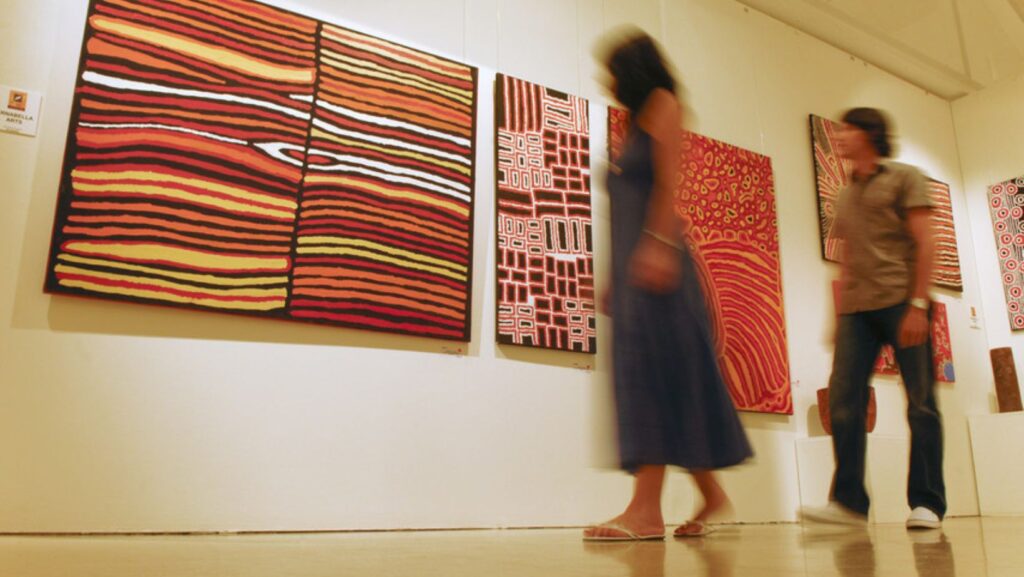Galleries The-Art-World
In the ever-evolving landscape of the art world, galleries stand as pivotal gateways between artists and audiences. These vibrant spaces not only showcase creativity but also foster connections,  conversations, and cultural exchanges. As art continues to redefine itself in the digital age, galleries remain steadfast in their role, bridging the past and the present while shaping the future of artistic expression.
conversations, and cultural exchanges. As art continues to redefine itself in the digital age, galleries remain steadfast in their role, bridging the past and the present while shaping the future of artistic expression.
Galleries offer more than just walls adorned with artwork; they’re dynamic environments where ideas are born and shared. From contemporary installations to timeless classics, each gallery curates a unique narrative that invites viewers to explore diverse perspectives. As cultural hubs, they play a crucial role in supporting emerging artists and preserving established ones, ensuring that art remains accessible to all.
In a world where technology often dominates, galleries provide a tactile experience that digital platforms can’t replicate. They invite visitors to immerse themselves in the beauty and complexity of art, making them indispensable to the art world.
Understanding Galleries In The Art World
Galleries play a crucial role as connectors in the art world. They bridge the gap between artists and audiences, offering not just exhibition space but interactive environments.
Galleries serve as essential platforms for showcasing artists’ work. They provide an opportunity for artists to gain exposure, often influencing career trajectories. By curating exhibitions, galleries contextualize artworks, offering viewers a narrative that enhances appreciation. They also facilitate cultural dialogues through events and discussions, fostering a community of art enthusiasts.
Commercial Galleries focus on selling art, representing artists and negotiating sales. They typically take a commission on sales, fostering long-term relationships with collectors and artists. Non-Profit Galleries prioritize public education and accessibility, often relying on grants and donations. These spaces emphasize community engagement and feature a diverse range of artists. Artist-Run Spaces grant artists control over exhibitions. They operate collaboratively, providing a platform for underrepresented or experimental work.
Iconic Galleries Around The World
Art enthusiasts can discover galleries worldwide that showcase diverse artistic traditions. Both urban and rural galleries contribute to the global art ecosystem in unique ways.
Renowned Urban Galleries
Urban centers host some of the most prestigious art galleries, known for their vast collections and influence. The Metropolitan Museum of Art in New York City houses over 2 million works, ranging from ancient artifacts to contemporary pieces, providing an extensive cultural overview. London’s Tate Modern focuses on modern art, featuring works by major artists like Picasso and Warhol. The Louvre in Paris remains a historic fixture, attracting millions each year to view masterpieces like the Mona Lisa. These urban galleries provide unmatched access to art history and play a pivotal role in shaping contemporary art dialogues.
Unique Rural Art Spaces
Rural art spaces offer visitors a distinct blend of art and nature. Storm King Art Center, located in New York’s Hudson Valley, spans 500 acres and features large-scale sculptures set against a picturesque landscape. In Japan, the Benesse Art Site on Naoshima Island integrates art installations with natural surroundings, fostering a contemplative art experience. Australia’s TarraWarra Museum of Art combines regional artistry with international works in a scenic setting, encouraging engagement with both local culture and global art discourse. These rural spaces showcase art in innovative ways while connecting audiences with nature.
The Impact Of Galleries On Artists
Galleries serve as a bridge between artists and their careers, offering vital opportunities for growth and recognition.
 Galleries provide artists with access to a wider audience, critical for career advancement. Through exhibitions, artists showcase their work to potential collectors, critics, and the public. This exposure can lead to personal connections, commissions, and collaborations with influential figures in the art community. Many galleries also offer mentorship programs and workshops, enabling artists to hone their skills and gain industry insights. Additionally, participation in gallery shows can enhance an artist’s resume, opening doors to further professional opportunities and recognition in the art world.
Galleries provide artists with access to a wider audience, critical for career advancement. Through exhibitions, artists showcase their work to potential collectors, critics, and the public. This exposure can lead to personal connections, commissions, and collaborations with influential figures in the art community. Many galleries also offer mentorship programs and workshops, enabling artists to hone their skills and gain industry insights. Additionally, participation in gallery shows can enhance an artist’s resume, opening doors to further professional opportunities and recognition in the art world.
Financial benefits from galleries stabilize and sustain artists’ careers. Sales through gallery exhibitions provide artists with essential income, allowing them to focus on their creative pursuits. Galleries often handle the marketing and sales process, freeing artists from administrative burdens. By building relationships with collectors, galleries help establish consistent demand for an artist’s work, potentially leading to price appreciation. Furthermore, galleries sometimes offer financial support through grants or sponsorships, enabling artists to pursue ambitious projects without the constraint of financial limitations.

